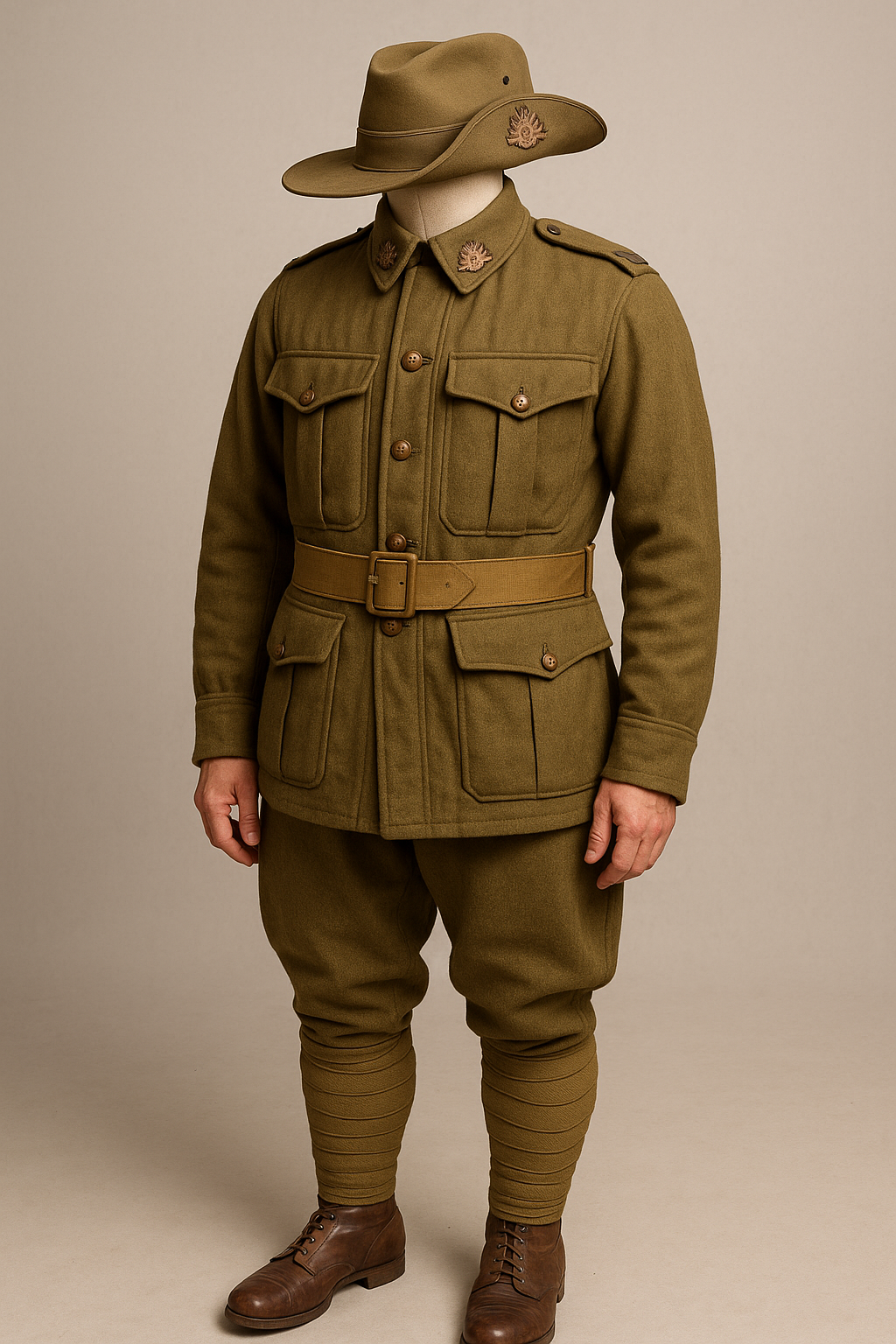
World War I American Uniform: A Detailed Guide for History Buffs & Reenactors
Published on Sep 21, 2025
Introduction:
Did you know over 4 million Americans served in WWI—and each wore a uniform designed not just for battle, but to reflect a nation’s identity?
The World War I American uniform is more than fabric and buttons. It’s a snapshot of a pivotal moment in global history, showing the transition from 19th-century style to modern warfare attire. Whether you're a collector, reenactor, or history lover, understanding these uniforms opens a window into the lives of the Doughboys who wore them. This guide dives deep into the details of WWI uniforms, offering tips, examples, and modern trends to help you connect with the past—accurately and meaningfully.
H2: Overview of the World War I American Uniform
During World War I, the U.S. Army adopted uniforms that were both functional and symbolic. Modeled partly after British designs, the standard American military uniform during World War I featured:
- Wool service coats with stand-and-fall collars
- Breeches (knee-length trousers) tucked into wrap puttees or boots
- Campaign hats or helmets later in the war
- Web gear like belts, suspenders, and haversacks
Key Components:
ItemDescription
Service Coat Wool, 4-pocket design, olive drab color
Breeches Wool, reinforced for horse-riding troops
Puttees: Long cloth strips wrapped around the lower leg
Helmet: The M1917 "Doughboy" helmet, similar to the British Brodie
Boots, Trench boots, or ankle boots, depending on the year
H2: The American World War I Uniform 1918 – What's Unique?
The American World War I uniform of 1918 had subtle but important updates to reflect lessons learned in trench warfare:
Differences in 1918 Uniforms:
- Introduction of steel helmets for better head protection
- Simplified gear layouts for efficiency
- Lighter fabric options for summer campaigns
- Modified insignias to improve unit identification
Real-Life Example:
Collectors often seek the 1918 M1917 helmet with original liner and chinstrap. Authentic versions are rare and can fetch over $300 depending on condition.
H2: African American Troops, Civil War Uniforms & Their Influence
The role of African American troops in World War I often goes overlooked, yet over 350,000 African American men served, many in segregated units like the Harlem Hellfighters.
Uniform Challenges for African American Soldiers:
- Wore standard issue uniforms but often received older or second-hand gear
- Lacked unit-specific insignia or custom tailoring
- Units like the 369th Infantry Regiment retained older Civil War era elements in ceremonial dress due to supply shortages
This overlap with Civil War uniforms highlights broader issues of racial inequality in the military and makes African American WWI uniforms an especially important area for collectors and historians.
H2: Actionable Tips for Collecting or Reproducing a World War I American Uniform
Creating an accurate WWI uniform replica or collection can be challenging, but here’s how to do it right:
H3: 1. Start with Research
- Use books like "The Doughboy's Uniform and Equipment, 1917-1918"
- Study museum archives or enlist in online forums like the Great War Forum
H3: 2. Source Reliable Reproductions
- Trusted reproduction brands: At The Front, What Price Glory
- Look for 100% wool construction and period-correct stitching
H3: 3. Verify Originality
- Avoid fakes by checking:
- Stampings inside service coats (usually dated and marked “US”)
- Original webbing will have brass or early aluminum buckles
- M1917 helmets should have the correct rivet patterns
H2: Common Pitfalls When Assembling or Buying WWI Uniforms
Don’t let simple mistakes ruin your authenticity. Watch out for:
Common Mistakes:
- Mixing WWI and WW2 gear (especially WW2 trousers, which are cut differently and use different buttons)
- Using synthetic fabrics instead of wool
- Buying from non-specialist sellers on platforms like eBay without provenance
Pro Tip:
Many confuse the WW2 trousers with WWI breeks. WWI versions are roomier at the thigh and taper sharply below the knee. Always compare photos before purchase.
H2: Current Trends in WWI Uniform Collecting & Reenactment
The hobby has seen a resurgence in interest, thanks to films like 1917 and increased digitization of archives.
Trending Now:
- Living History Events: Interactive public displays with full uniforms and period gear
- Digital Reproductions: 3D-printed uniform accessories and gear are gaining popularity
- Inclusive Representation: Greater emphasis on African American troops and women's auxiliary uniforms
H2: Must-Have Accessories for an Authentic Look
No uniform is complete without its accessories. For an accurate impression:
Essential Add-ons:
- M1910 Canteen and Cover
- M1917 Gas Mask Bag
- Trench Whistle and Lanyard
- M1903 Springfield Rifle or replica
- Dog Tags (Stamped with WWI format)
H2: Caring for a World War I American Uniform
Proper care extends the life of your gear:
Tips:
- Store in a cool, dry place
- Avoid plastic storage (use acid-free boxes)
- Handle wool with gloves to prevent oil stains
- Use cedar blocks to deter moths
Conclusion: Preserving History Through Uniforms
Whether you're honoring the past, preparing for a reenactment, or building a collection, understanding the World War I American uniform is key to connecting with history on a deeper level. From the overlooked contributions of African American troops to the subtle changes in the American World War I uniform in 1918, each thread tells a story.
